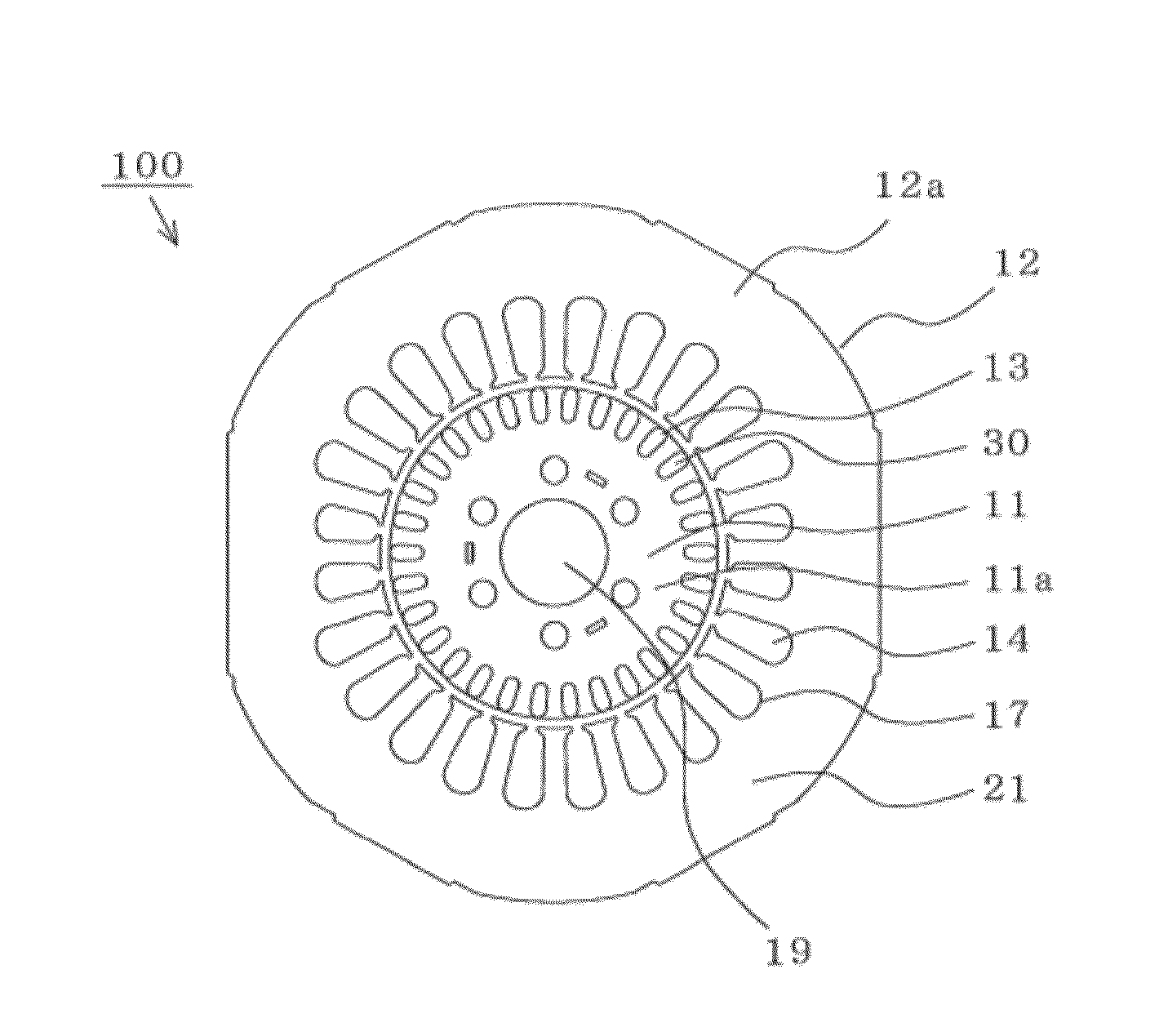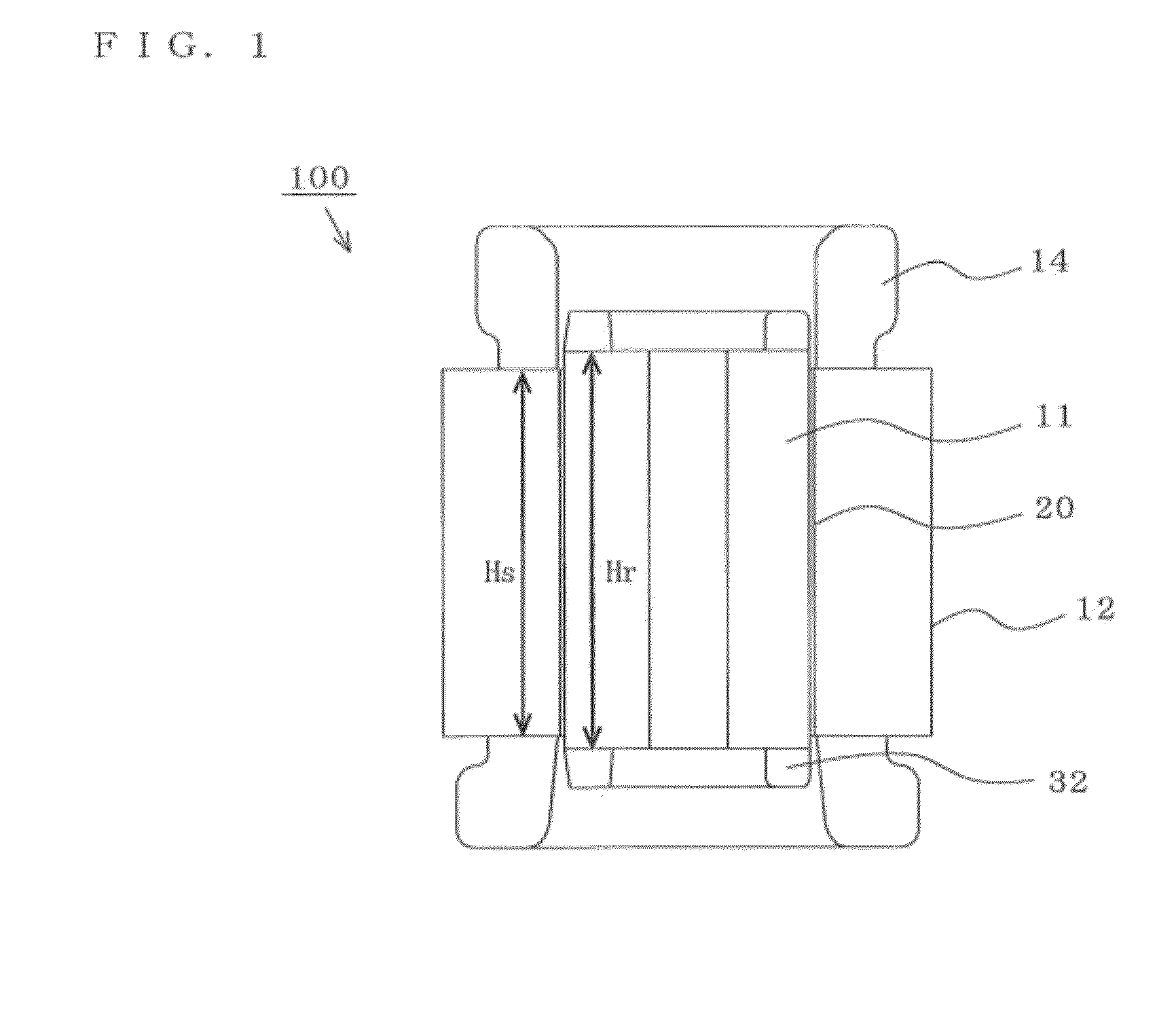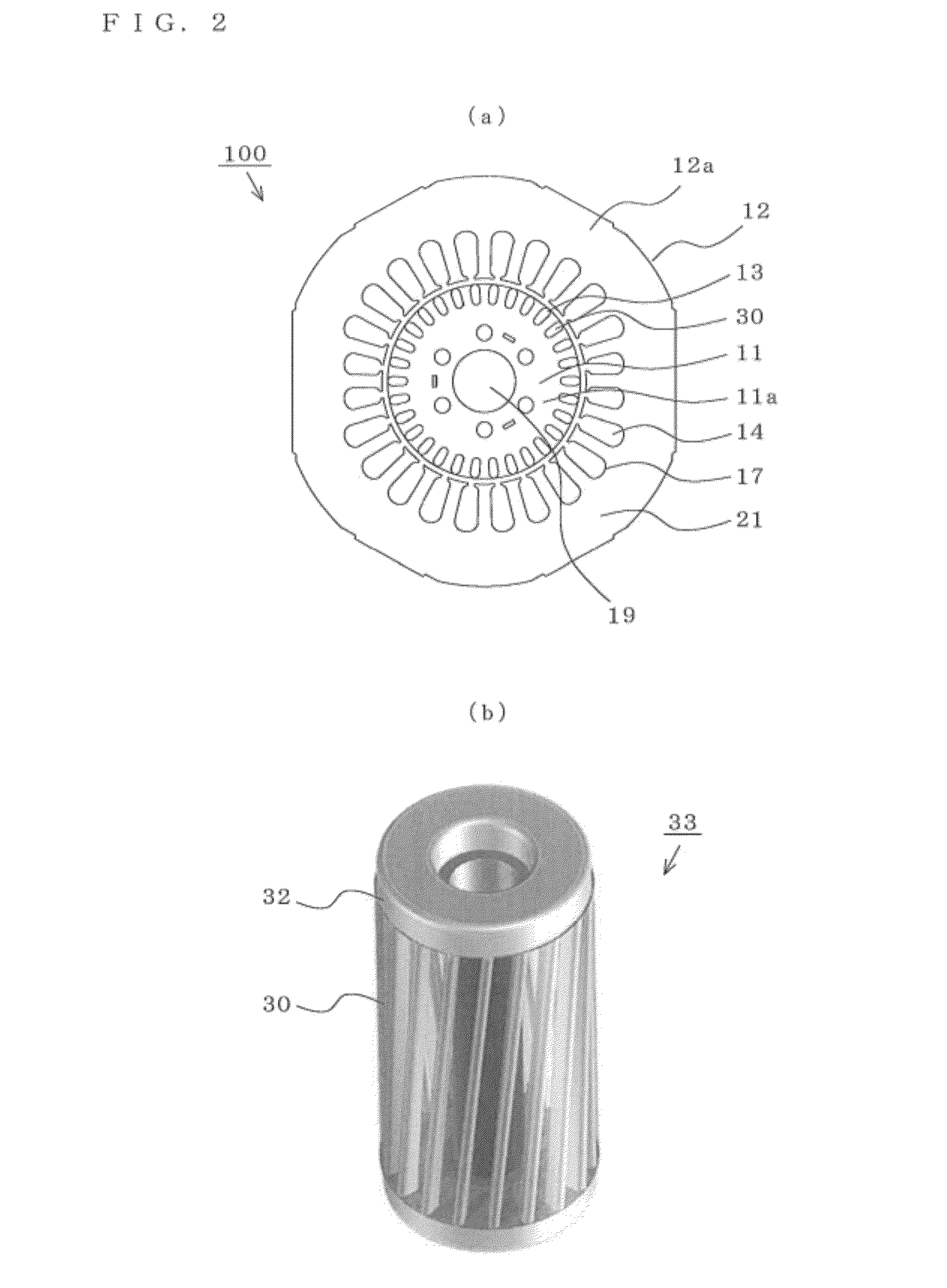Induction motor, compressor and refrigerating cycle apparatus
a technology of compressor and compressor, which is applied in the direction of piston pumps, magnetic circuit rotating parts, and magnetic circuit shapes/forms/constructions, etc., can solve the problems of lowering the performance of the motor, and achieve the reduction of iron loss, increasing the width of the tooth of the rotor, and decreasing the width of the tooth of the stator
- Summary
- Abstract
- Description
- Claims
- Application Information
AI Technical Summary
Benefits of technology
Problems solved by technology
Method used
Image
Examples
embodiment 1
[0017]FIG. 1 to FIG. 3 are views for explaining an induction motor according to Embodiment 1 of the present invention, wherein FIG. 1 is an axial cross-sectional view, FIG. 2 is a transverse cross-sectional view and FIG. 3 is a partially enlarged plan view of a stator core and a rotor core. The respective views are drawn schematically, and the present invention is not limited to a depicted mode (the number or amounts of respective parts, and relative size ratios and the like).
[0018]In FIG. 1, an induction motor 100 includes a stator 12, and a rotor 11 which is arranged inside the stator 12 with an air gap 20 formed therebetween.
(Stator)
[0019]In FIG. 2A, the stator 12 includes an approximately ring-shaped stator core 12a and stator coils 14 which are inserted into stator slots 17 formed in the stator core 12a. The stator coil 14 is a coil wound around each stator tooth 16 by concentration winding or distribution winding. Further, the stator coil 14 adopts a single phas...
embodiment 2
[0037]FIG. 4 is a partially enlarged plan view for explaining an induction motor according to Embodiment 2 of the present invention. The induction motor 103 is formed by changing a shape of the rotor slot 13 in the induction motor 100 (Embodiment 1). Parts other than the rotor slots 13 are equal to corresponding parts in Embodiment 1 and hence, the explanation of some parts is omitted.
[0038]In FIG. 4A, a rotor slot 40 is modified in shape by forming a projection 41 on an outer peripheral side of the rotor slot 13 in Embodiment 1.
[0039]In FIG. 4D, by forming the rotor slot 40 into a projecting shape having the projection 41, a stator magnetic flux smoothly enters the rotor tooth 15 and hence, a magnetic flux of the rotor tooth 15 becomes higher than a magnetic flux of the rotor tooth having a general arcuate shape (see FIG. 4B and FIG. 4C) which is not provided with the projection 41.
[0040]That is, when the rotor slot 40 has no projection and a bridge portion 10 is nar...
embodiment 3
[0041]FIG. 5 is a partially enlarged plan view for explaining an induction motor according to Embodiment 3 of the present invention. The induction motor 104 is formed by changing a shape of the rotor slot 13 in the induction motor 100 (Embodiment 1). Parts other than the rotor slots 13 are identical with corresponding parts in Embodiment 1 and hence, the explanation of some parts is omitted.
[0042]In FIG. 5A, a rotor slot 50 is formed by modifying the rotor slot 13 in Embodiment 1 such that the rotor slot 50 is provided with a rhombic V-shaped distal end 51 whose outer peripheral side is formed into an approximately V shape. By forming the distal end 51 into a rhombic shape, a stator magnetic flux smoothly enters the rotor tooth 15 and hence, a magnetic flux of the rotor tooth 15 becomes higher than a magnetic flux of the rotor tooth having a generally arcuate shape (see FIG. 3).
[0043]Further, by forming a distal end of the rotor slot 50 into a V shape as shown in FIG....
PUM
 Login to View More
Login to View More Abstract
Description
Claims
Application Information
 Login to View More
Login to View More - R&D
- Intellectual Property
- Life Sciences
- Materials
- Tech Scout
- Unparalleled Data Quality
- Higher Quality Content
- 60% Fewer Hallucinations
Browse by: Latest US Patents, China's latest patents, Technical Efficacy Thesaurus, Application Domain, Technology Topic, Popular Technical Reports.
© 2025 PatSnap. All rights reserved.Legal|Privacy policy|Modern Slavery Act Transparency Statement|Sitemap|About US| Contact US: help@patsnap.com



